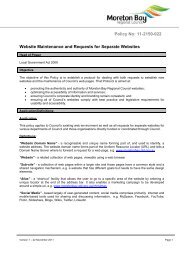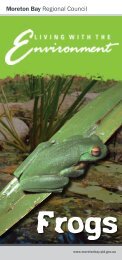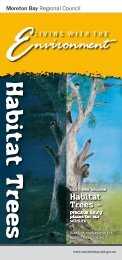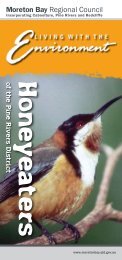Castor oil plant
Castor oil plant
Castor oil plant
- No tags were found...
You also want an ePaper? Increase the reach of your titles
YUMPU automatically turns print PDFs into web optimized ePapers that Google loves.
Fact sheetPEST PLANT<strong>Castor</strong> <strong>oil</strong> <strong>plant</strong>Ricinus communis<strong>Castor</strong> <strong>oil</strong> <strong>plant</strong> spreads over sandy s<strong>oil</strong> areas, creek banksand gullies. This can lead to a significant loss of primegrazing land.The seeds of castor <strong>oil</strong> contain ricin, a poison that isextremely toxic to livestock and humans. Leaves have alesser amount of toxin. Symptoms of poisoning in animalsusually do not appear for a few hours or several days.Seeds cause gastrointestinal disorders and leaves tendto cause neuromuscular disorders. Poisoning in livestockis rarely reported though, as castor <strong>oil</strong> <strong>plant</strong> is seldomgrazed by stock when other pasture <strong>plant</strong>s are available.Also, small amounts of the <strong>plant</strong> will induce an immunityto poisoning.Declaration details<strong>Castor</strong> <strong>oil</strong> <strong>plant</strong> is not declared under the Land Protection(Pest and Stock Route Management) Act 2002; however,<strong>plant</strong>s that are not declared under state legislation mayhave control requirements imposed by local governments.Description and general information<strong>Castor</strong> <strong>oil</strong> <strong>plant</strong> is a tall, branching perennial shrub thatgrows to 3 m high and occasionally higher. It has stout,hollow branches that are a dull pale green or red. Olderbranches and trunks turn greyish.Large leaves (10−60 cm across) are widely spaced on thebranches and grow on long, stout, hollow stalks attachedoff-centre to the bottom of the leaf. Each leaf is dividedinto 7−9 pointed triangular segments with toothed edgesand conspicuous veins. Leaves are glossy, dark reddishgreenwhen young and glossy green when mature.The flowers are crowded in stout, erect spikes in the forksof the upper branches. Female flowers are in the upperpart of the spikes and male flowers at the base.Female flowers develop into fruit about 2.5 cm acrossthat are covered with soft green or red spines. The fruithave three segments, each segment containing onelarge, mottled, smooth seed. When ripe, the fruit explodeviolently and throw the seeds a distance of several metres.PP44 April 2010
The name castor <strong>oil</strong> <strong>plant</strong> is sometimes mis-applied tobellyache bush (Jatropha gossypifolia). Bellyache bushcan be found in similar habitats but is usually smallerthan castor <strong>oil</strong> <strong>plant</strong>; has leaves with only three smooth,rounded lobes; and has small, smooth fruits found inclusters in the upper parts of the <strong>plant</strong>.Habitat and distribution<strong>Castor</strong> <strong>oil</strong> <strong>plant</strong> is native to Africa and Asia, and is nownaturalised throughout Australia. It is often abundantalong watercourses and floodplains, disturbed or wasteland, and roadsides. It may be common locally after heavyrains or floods.ControlIndividual <strong>plant</strong>s or small infestations may be removed bycultivation or hand-pulling. Broadscale infestations mayrequire spraying with herbicides to control the <strong>plant</strong>.Herbicides registered for the control of castor <strong>oil</strong> <strong>plant</strong> areprovided in Table 1.Further informationFurther information is available from your localgovernment office, or by contacting BiosecurityQueensland (call 13 25 23 or visit our website atwww.biosecurity.qld.gov.au).Table 1. Herbicides registered for the control of castor <strong>oil</strong> <strong>plant</strong>Situation Herbicide Rate CommentsFoliar (overall spray) 2,4-D amine 4.2 L/ha Add wetting agentSpray <strong>plant</strong> to point of run-offBasal spray/cut stump Garlon 600/Triclopyr 1.7 L per 100 L diesel Basal spray around entire base of <strong>plant</strong> to a height of40 cm when <strong>plant</strong> is actively growingCut stump at any time of year, but treat stump immediatelyafter cuttingRead the label carefully before use. Always use the herbicide in accordance with the directions on the label.Fact sheets are available from Department of Employment, Economic Development and Innovation (DEEDI) service centres and our BusinessInformation Centre (telephone 13 25 23). Check our website at www.biosecurity.qld.gov.au to ensure you have the latest version of this fact sheet. Thecontrol methods referred to in this fact sheet should be used in accordance with the restrictions (federal and state legislation, and local governmentlaws) directly or indirectly related to each control method. These restrictions may prevent the use of one or more of the methods referred to,depending on individual circumstances. While every care is taken to ensure the accuracy of this information, DEEDI does not invite reliance upon it,nor accept responsibility for any loss or damage caused by actions based on it.© The State of Queensland, Department of Employment, Economic Development and Innovation, 2010 PR10–4908


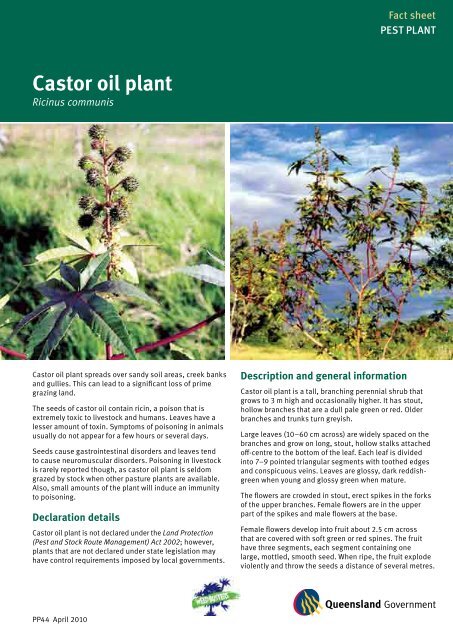
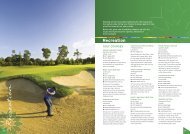

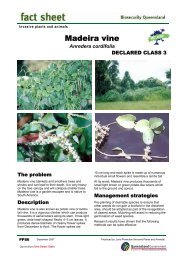
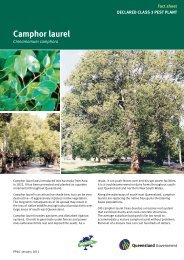


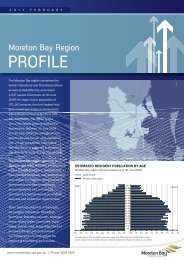
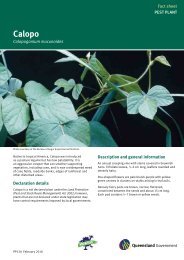

![Kumbartcho Brochure [PDF 540KB] - Moreton Bay Regional Council](https://img.yumpu.com/47220970/1/190x101/kumbartcho-brochure-pdf-540kb-moreton-bay-regional-council.jpg?quality=85)
